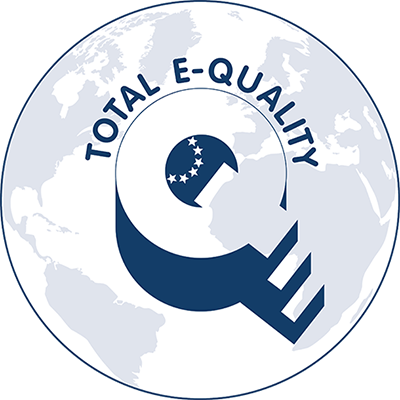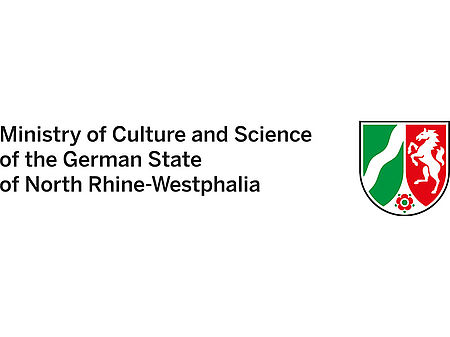Copyright and academic research: what are the key issues that affect you as an author
Copyright - the basics
Under German copyright law (§7 of the German Copyright Act, or UrhG), the creator of a work also owns the copyright to the work. In Germany and many other countries, the initial copyright owner must be a physical person.
Examples of copyrighted material in the realms of academia and research include
- articles in academic journals,
- contributions to anthologies and collections,
- monographs / books,
- newspaper articles,
- presentations,
- scientific / conference posters,
- photos,
- examination papers such as dissertations and theses for diplomas, Bachelor’s and Master’s degrees, and post-doctoral courses.
To warrant copyright protection, a work must constitute a personal intellectual creation. It must also reach a certain threshold of originality, demonstrating an individual character and a degree of creativity in its form and content. That’s why not all research data is copyrightable.
It is also important to note that ideas alone are not protected by copyright. Only the concrete expression of these ideas is protected, which – in the context of scientific research – generally refers to the expression of the ideas in writing. Copyright will then protect the written work, though not the idea itself as revealed in this work.
See also
Research Data: what are the key issues to consider when publishing this kind of material?
Protection of an author's moral rights
The section of German copyright law concerning the moral rights of authors (§§ 12-14 UrhG) states that the author has the sole right to determine whether and how his/her work shall be published and that he/she has the right to be identified as the author of the work. It also provides authors with recourse against distortion or any other derogatory treatment of their work.
Copyright protection automatically applies when a work is created. It also applies to unpublished works and sketches. Copyright is non-transferable and expires 70 years after the author’s death, though it may be transferred by inheritance (§ 64 UrhG; § 28 UrhG).
The author has the exclusive right to exploit his/her work and to communicate this work to the public. The relevant exploitation rights for academic publications comprise the right of exhibition (§ 18 UrhG) and, in particular, the right of reproduction (§ 16 UrhG) and the right of distribution (§ 17 UrhG). Regarding communication to the public, the right of making works available to the public (§ 19a UrhG) is also of interest, primarily in the context of making the work available online.
Granting of exploitation rights
To manage these rights, authors can grant exploitation rights. A distinction is made between exclusive and non-exclusive exploitation rights. In the case of a non-exclusive exploitation right, the right holder (e.g. the publisher or editor) is entitled to use the work concurrently with the author or any other entitled persons, in the manner permitted to him or her. In the case of an exclusive exploitation right, the right holder is entitled to use the work, to the exclusion of all other persons, in the manner permitted to him or her, and to grant non-exclusive exploitation rights. This can result in a situation where an author may be excluded from exploiting their own work. Exploitation rights may be limited in terms of their geographical scope, duration or content.
It is always better to sign over as few rights as possible when getting a work published, even though publishers generally request a comprehensive transfer of all the rights.
See also
Author agreements (publication agreements): which aspects are relevant?
Joint authorship
Where several authors create a work together, they are considered to be joint authors of the work. In this case the right to exploit the work and communicate the work to the public accrues jointly to the joint authors. Decisions in relation to these matters can only be made jointly by the authors. Decisions on altering the work must also be taken jointly, though a joint author may not refuse his or her consent “contrary to the principles of good faith” (§ 8 UrhG). In practice, groups of authors generally nominate a “corresponding author” to conduct business such as negotiating with the publisher.
Citations in a scholarly context
Copyright protected works may only be used with the consent of the author or the copyright owner. To enable references to other works to be made in the context of academic discourse, German legislators have created an effective method in the form of the right of quotations (§ 51 UrhG). This right allows parts of a work (or even an entire work in certain cases, e.g. a poem) to be used for the purpose of quotation without the author’s consent and without seeking approval.
Nevertheless, the legislation sets some clear limits, stating that quotations are only permissible if they are intended to support an argument. Use of quotations without any commentary, e.g. for illustrative or decorative purposes, is not permitted under the right of quotation and therefore may only be carried out with the consent of the author or copyright owner and payment of remuneration. In addition, the length of the quotation must be proportionate, though there are no limitations with regard to its scope. The exact wording of the original must be used, with no alterations, and the source must always be acknowledged (§ 63 UrhG). These provisions apply not only to texts, but also to illustrations and graphics since these are also protected by copyright. The use of photos and images may also be covered by the right of quotations, though the limits of what is permissible can swiftly be exceeded in this case.
Good academic practice dictates that both the author and source of the original copyrighted work should be named whenever a verbatim quotation is used in a different work. The same applies to the adoption of intellectual stances, for example paraphrasing somebody’s ideas. Acknowledgement must also be made of quotations taken from the author’s own academic works and texts, otherwise this could be considered self-plagiarism.
Further information:
- The recommendations on safeguarding good scientific practice published by the German Research Foundation (DFG) (German only)
- Joint Position Paper of the Combined Faculties Association (Allgemeiner Fakultätentag), the Faculties Association (Fakultätentag) and the German Association of University Professors and Lecturers (Deutscher Hochschulverband) entitled “Good academic practice in the context of theses submitted for a degree”
See also
Academic referencing and citations: key points to consider
An introduction to good research practice, research misconduct and academic integrity
Cases not covered by the right of quotations
All cases not covered by the right of quotations (use of more of the work than is proportionate, use for illustration purposes, etc.) require consent and the payment of remuneration, meaning that contact must be made with the author or copyright owner. Major publishers usually include a form on their website that can be used to obtain the necessary rights.
This also applies, in particular, to your own texts, illustrations, graphics, etc. which have already been published in the event that the rights of exploitation were ceded to a publisher. This situation frequently arises in an academic context in the case of cumulative theses which are based on texts which have already been published. As a general rule, publishers are aware of this issue and will consent to appropriate use. To avoid complications when publishing an individual article, however, you should reserve the right to use the publication again within the scope of a thesis.
Special care should be taken when using extracts from maps, since these are also generally subject to copyright. You should always request the consent of the map provider unless you are using a service which provides maps on an explicitly free and open basis such as OpenStreetMap. The same applies to the use of photos and images.
When using other materials which exceed the permitted scope of the right of quotations, requesting the author’s consent may in some cases be unnecessary, for example if the work is available under an open content license such as the Creative Commons licence.
See also
What do Creative Commons licenses offer?
Exploitation rights in the case of employment and service provision
As a general rule, an author’s moral rights still apply to the creation of academic works even in the case of employment or service provision. However, if such works form part of the (core) tasks performed by an employee, the exploitation rights are ceded to the employer. Ideally this should be specified in the employment contract so that no misunderstandings arise at a later point in time. Unless otherwise specified in the employment contract, the exploitation rights are granted to the employer for an limited period of time, though this does not extend to work produced prior to and after the period of employment. As a general this applies to all employment and service provision agreements, though an exception applies to professors as long as they are not contractually employed. In this latter case the exploitation rights are not automatically ceded to the university. Clear contractual agreements are required to ensure that universities can make use of the results of people’s work.
Is there an obligation to publish scholarly texts and to use the open access model?
As laid down in §§ 12–14, the author has the sole right to determine whether and how his/her work shall be published, so an obligation to publish works would initially seem to be ruled out. However, in the world of research and academia publications are the medium through which results and findings are communicated. As a consequence, pertinent publications about each researcher’s own field of work are the key to making progress in academia and science and to securing funding. What’s more, conducting research and publishing research results is often one of the core tasks set out in a contract of employment, which means that it is linked to legal obligations and expectations on the part of the employer. Once again, there are exceptions for professors. A similar situation applies in regard to open access.
When it comes to externally-funded projects, however, funding bodies have the right to tie the provision of funding to certain conditions. These can include the requirement to publish results and make them freely accessible.
Doctoral candidates are also obliged to publish their thesis in order to obtain a PhD. However, this requirement to publish a thesis is not governed by copyright law, but by the doctoral regulations of the respective university or institute of higher education.
See also
PhD theses: what should doctoral students take into account when publishing their thesis?
The role of an academic author: key tips for researchers
Copyright and AI-generated scholarly publications
Because generative AI content does not in itself constitute a creative work, it is not eligible for copyright protection. Copyright can only be claimed once the generated text has been revised or expanded to the point that it meets the threshold of originality. In line with good scientific practice, researchers must disclose any use of generative AI tools in academic writing. This should be done through a clear statement in the publication – not by naming the tool as an author.
See also
General considerations for using generative AI in scholarly publishing
The role of an academic author: key tips for researchers
Disclaimer
Important note: The information and links provided here do not represent any form of binding legal advice. They are solely intended to provide an initial basis to help get you on the right track. ZB MED – Information Centre for Life Sciences has carefully checked the information included in the list of FAQs. However, we are unable to accept any liability whatsoever for any errors it may contain. Unless indicated otherwise, any statements concerning individual statutory norms or regulations refer to German law (FAQ updated 09/2025).
Contact

Dr. Jasmin Schmitz
Head of Publication Advisory Services
Phone: +49 (0)221 999 892 665
Send mail
References
German act on copyright and related rights of 9 Semptember 1965, last amendmends on 23 June 2021 (BGBl. I S. 1858), Bundesministerium für Justiz. (accessed 29/11/2022)
Related links
Open Street Map
ITM - Civil Department: Materials (German only)
Klimpel, P. & Weitzmann, J. H. (2015). Forschen in der Digitalen Welt: Juristische Handreichung für die Geisteswissenschaften. DARIAH-DE working papers 12. GOEDOC, Göttingen. (German only)
Guidelines for Safeguarding Good Scientific Research Praxis: Code of Conduct of September 2019, corrected version 1.1, Deutsche Forschungsgemeinschaft e.V.
Gemeinsames Positionspapier des Allgemeinen Fakultätentags (AFT), der Fakultätentage und des Deutschen Hochschulverbands (DHV) vom 9. Juli 2012: Gute wissenschaftliche Praxis für das Verfassen wissenschaftlicher Qualifikationsarbeiten. Deutscher Hochschulverband. (German only)
Urheberrecht in der Wissenschaft of July 2023, Federal Ministry of Research, Technology and Space (BMFTR) (German only)




